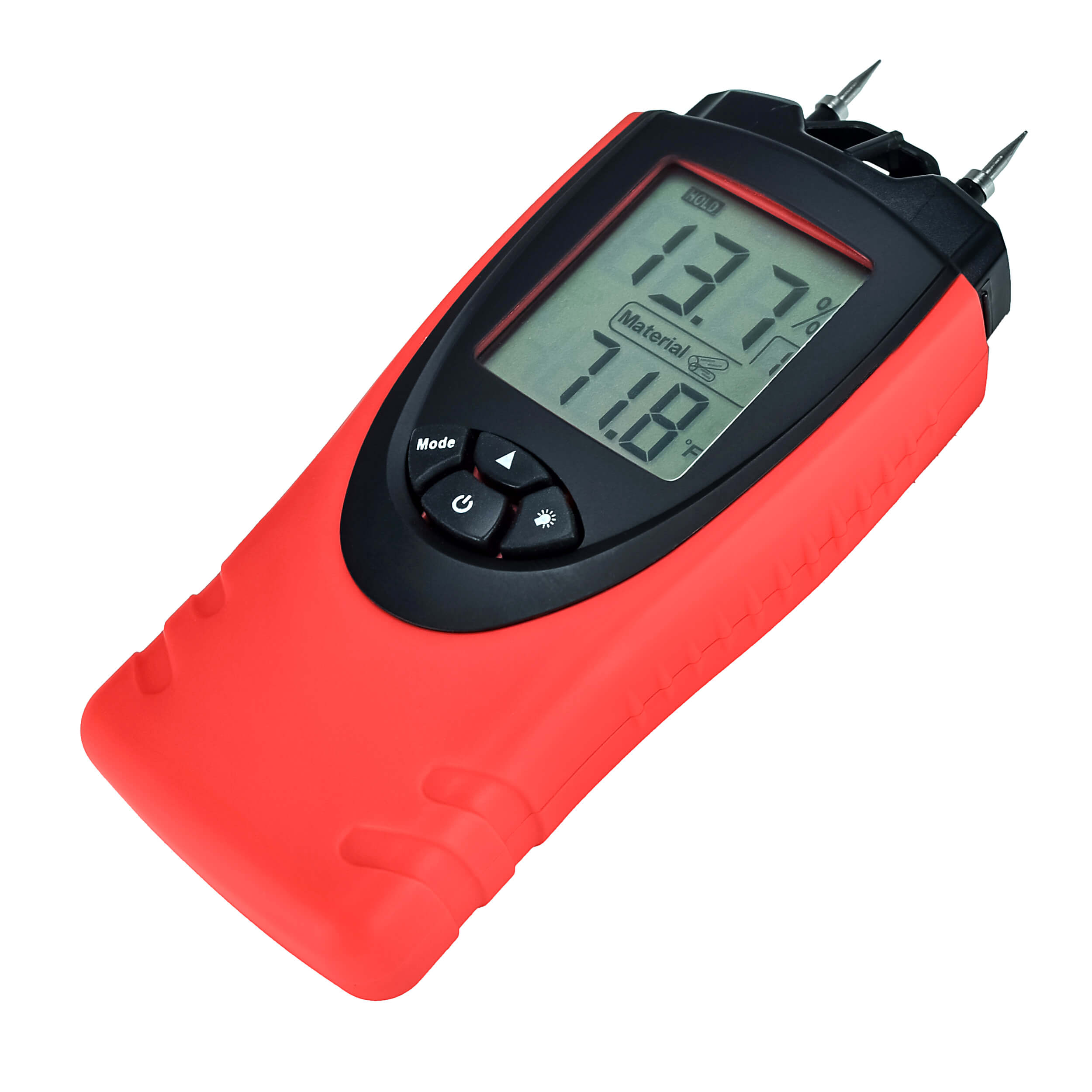Explore the Globe of Moisture Meters: Every Little Thing You Need to Know
In the realm of moisture meters lies a globe of accuracy and usefulness that frequently goes unnoticed. These devices, while seemingly straightforward, hold a wealth of details that can dramatically influence various industries and applications. Understanding exactly how moisture meters operate, the different kinds readily available, and their diverse uses can clarify their significance in guaranteeing quality and effectiveness. By checking out the ins and outs of dampness meters, one can reveal a beneficial tool that transcends mere measurement, offering understandings that can make a significant difference in countless areas.
Just How Moisture Meters Work
Moisture meters operate by measuring the electrical conductivity or capacitance of products to identify the dampness content existing. These meters are very useful tools throughout various markets, consisting of agriculture, building, and woodworking. By using different approaches such as pin-type or pinless innovation, wetness meters give accurate readings that help experts make notified choices.
Pin-type dampness meters function by putting the sharp pins right into the material being tested. The electrical conductivity in between the pins is after that determined, with greater dampness degrees bring about increased conductivity. Moisture Meter. On the other hand, pinless moisture meters utilize electromagnetic signals to check a bigger location without causing any damage to the material's surface. These meters are optimal for quickly evaluating moisture levels in big locations or ended up items.
Regardless of the method used, dampness meters play an essential role in protecting against concerns such as mold and mildew growth, structural damages, or product defects triggered by excess dampness. Recognizing exactly how these meters work is crucial for making certain the high quality and integrity of products in different applications.
Types of Moisture Meters
Offered the important role dampness meters play in different industries, it is vital to comprehend the different kinds available to specialists for accurately assessing wetness levels - Moisture Meter. There are mostly two major kinds of dampness meters: pin-type and pinless dampness meters

On the other hand, pinless dampness meters utilize electromagnetic sensing unit plates to scan a bigger area of the product without triggering any damages. This type appropriates for quickly scanning big areas and is typically utilized for floor covering, walls, and ceilings. Pinless meters are convenient for taking analyses on completed surfaces without leaving any kind of visible marks.
Both kinds of moisture meters have their benefits and are picked based on the certain needs of the job available. Understanding the differences in between these types is critical for professionals to make precise dampness assessments.
Applications Throughout Industries
Building professionals rely on wetness meters to evaluate the dampness levels in structure materials like timber, concrete, and drywall, which is important for maintaining architectural integrity and stopping issues like rot or mold and mildew. The floor covering market utilizes wetness meters to measure the wetness web content in subfloors before mounting numerous floor treatments, avoiding pricey damages due to excess wetness. In the food sector, moisture meters are utilized to check and control moisture degrees in items such as grains, nuts, and dried fruits to keep freshness and high quality.
Tips for Making Use Of Moisture Meters
When measuring the moisture material in numerous materials,Utilize the wetness meter's calibration setups to make certain accurate readings. Calibration is important for the appropriate performance of a dampness meter. Before each use, it is recommended to inspect and readjust the calibration setups according to the specific material being evaluated. Furthermore, see to it the meter is readied to the right dampness array for the product you are gauging to get one of the most precise results.
When using a pin-type moisture meter, insert the pins to the appropriate depth advised for the product being checked. This makes sure that the wetness readings are extracted from the proper deepness within the product, offering a more exact depiction of its wetness material. For pinless wetness meters, keep in mind to preserve proper call with the material's surface to obtain trusted readings.
Consistently inspect and replace the batteries in your wetness meter to avoid imprecise readings because of reduced power. Store the meter in a safe and completely dry place when not in usage to prolong its life expectancy and maintain its accuracy. By complying with these tips, you can make best use of the performance of your wetness meter and get accurate dampness content measurements throughout different materials.
Upkeep and Calibration
To ensure the accuracy of moisture content measurements, regular maintenance and calibration of the moisture meter are essential steps in its proper performance. Calibration readjusts the dampness meter to make certain that it gives regular and trusted outcomes.
Calibration needs to be carried out periodically, specifically if the wetness meter is used often or in crucial applications where browse this site precise dimensions are required. By calibrating the moisture and preserving meter routinely, individuals can trust the precision of the wetness web content measurements gotten.
Conclusion

To conclude, dampness meters play a critical function in numerous industries by accurately determining the dampness content of materials. Comprehending just how these devices work, the various kinds available, and proper maintenance and calibration are crucial for obtaining reputable outcomes. Whether in manufacturing, construction, or agriculture, using wetness meters aids ensure high quality control and effectiveness in processes.

In verdict, wetness meters play this contact form a vital function in different industries by accurately gauging the dampness material of materials.
Comments on “How a Moisture Meter Can Improve Your Construction Tasks and Prevent Damages”